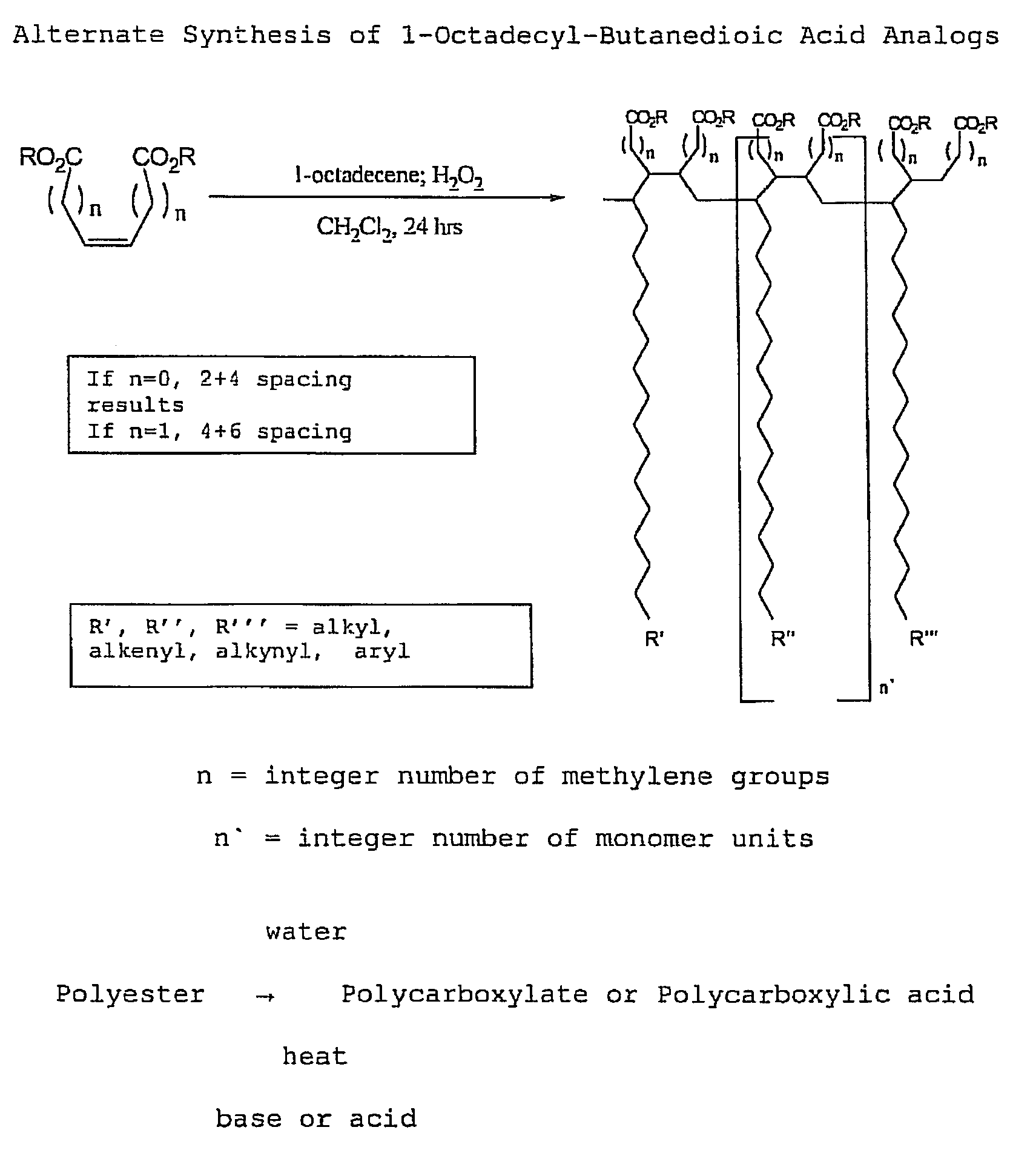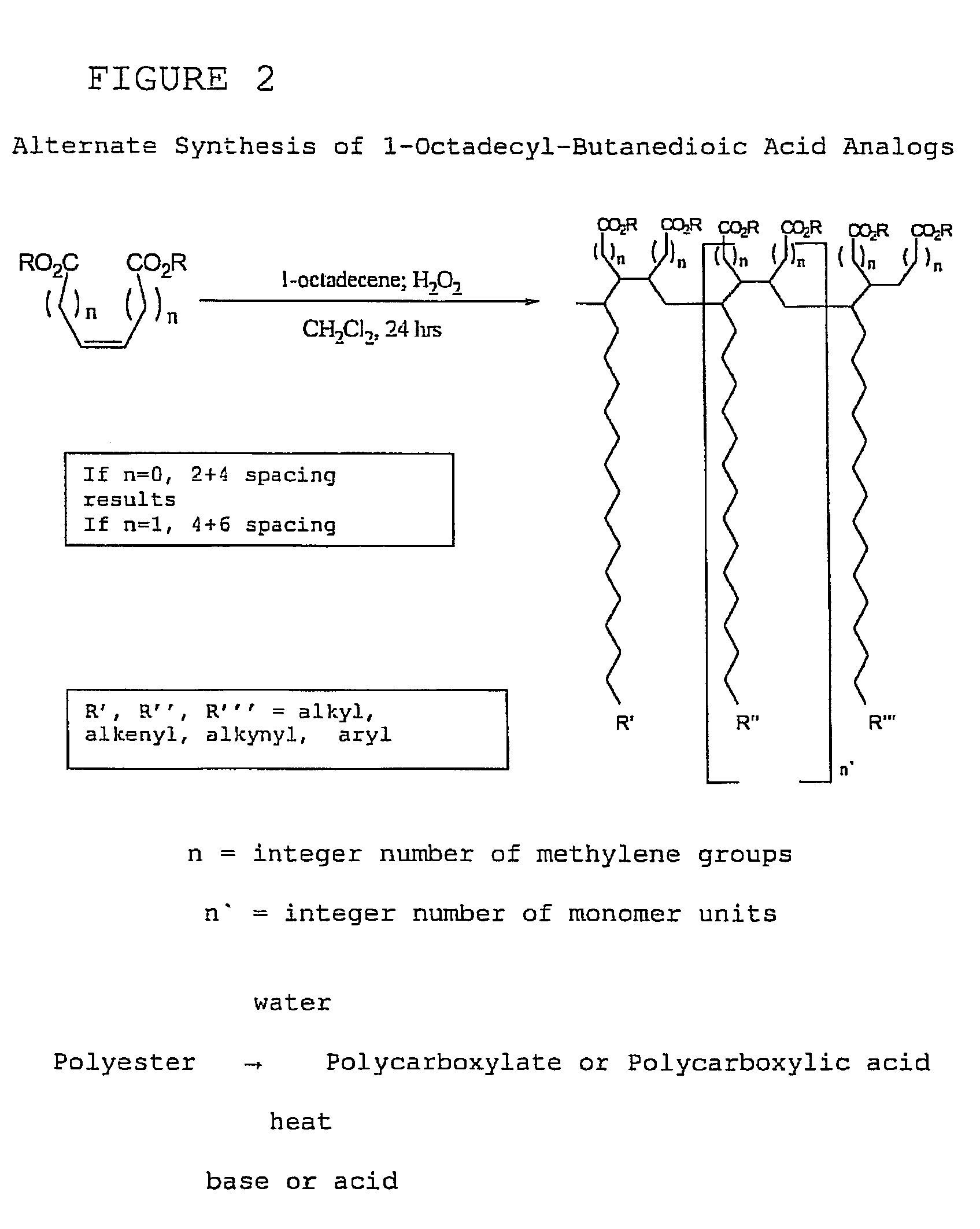Chelating compound and the corresponding acid
a technology of chelating compound and corresponding acid, which is applied in the direction of ion exchanger, water/sewage treatment by ion exchange, separation process, etc., can solve the problem of limiting the kinetics (speed) of sorption reaction and the capacity of sorbent, and many sorbents cannot be used in solutions having a high sodium ion content, etc. problem, to achieve the effect of low cost of manufacture, easy and efficient manufacturing and marketing, and easy reproduction
- Summary
- Abstract
- Description
- Claims
- Application Information
AI Technical Summary
Benefits of technology
Problems solved by technology
Method used
Image
Examples
Embodiment Construction
[0111]With reference now to the drawings, and in particular to FIG. 1 thereof, the preferred embodiment of the new and improved chelating Compound, and Method of Use of Poly(1-Octadecyl-Butanedioate, sodium) embodying the principles and concepts of the present invention will be described. Simplistically stated, the polymer herein described comprises a plurality of reactive groups, being carboxylates or carboxylic acid groups. The reactive group is directly bonded to the carbon backbone.
[0112]The initial, or primary component, for the synthesis, is a commonly available, previously described component. The primary component may be prepared as follows:
[0113]1. The polycarboxylate is produced from the corresponding polyanhydride. The polyanhydride is produced by a process that is described and disclosed in U.S. Pat. No. 3,560,456, issued to S. M. Hazen and W. J. Heilman, entitled “Process of forming copolymers of maleic anhydride and an aliphatic olefin having from 16 to 18 carbon atoms...
PUM
| Property | Measurement | Unit |
|---|---|---|
| Temperature | aaaaa | aaaaa |
| Angular velocity | aaaaa | aaaaa |
| Angular velocity | aaaaa | aaaaa |
Abstract
Description
Claims
Application Information
 Login to View More
Login to View More - R&D
- Intellectual Property
- Life Sciences
- Materials
- Tech Scout
- Unparalleled Data Quality
- Higher Quality Content
- 60% Fewer Hallucinations
Browse by: Latest US Patents, China's latest patents, Technical Efficacy Thesaurus, Application Domain, Technology Topic, Popular Technical Reports.
© 2025 PatSnap. All rights reserved.Legal|Privacy policy|Modern Slavery Act Transparency Statement|Sitemap|About US| Contact US: help@patsnap.com



